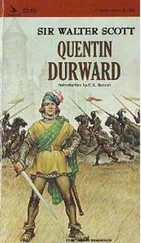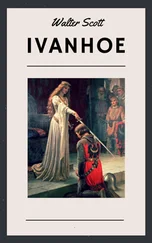Walter Scott - Letters on Demonology and Witchcraft
Здесь есть возможность читать онлайн «Walter Scott - Letters on Demonology and Witchcraft» весь текст электронной книги совершенно бесплатно (целиком полную версию без сокращений). В некоторых случаях можно слушать аудио, скачать через торрент в формате fb2 и присутствует краткое содержание. Жанр: История, на английском языке. Описание произведения, (предисловие) а так же отзывы посетителей доступны на портале библиотеки ЛибКат.
- Название:Letters on Demonology and Witchcraft
- Автор:
- Жанр:
- Год:неизвестен
- ISBN:нет данных
- Рейтинг книги:4 / 5. Голосов: 1
-
Избранное:Добавить в избранное
- Отзывы:
-
Ваша оценка:
- 80
- 1
- 2
- 3
- 4
- 5
Letters on Demonology and Witchcraft: краткое содержание, описание и аннотация
Предлагаем к чтению аннотацию, описание, краткое содержание или предисловие (зависит от того, что написал сам автор книги «Letters on Demonology and Witchcraft»). Если вы не нашли необходимую информацию о книге — напишите в комментариях, мы постараемся отыскать её.
Letters on Demonology and Witchcraft — читать онлайн бесплатно полную книгу (весь текст) целиком
Ниже представлен текст книги, разбитый по страницам. Система сохранения места последней прочитанной страницы, позволяет с удобством читать онлайн бесплатно книгу «Letters on Demonology and Witchcraft», без необходимости каждый раз заново искать на чём Вы остановились. Поставьте закладку, и сможете в любой момент перейти на страницу, на которой закончили чтение.
Интервал:
Закладка:
The execution of witches became for these reasons very common in Scotland, where the king seemed in some measure to have made himself a party in the cause, and the clergy esteemed themselves such from the very nature of their profession. But the general spite of Satan and his adherents was supposed to be especially directed against James, on account of his match with Anne of Denmark—the union of a Protestant princess with a Protestant prince, the King of Scotland and heir of England being, it could not be doubted, an event which struck the whole kingdom of darkness with alarm. James was self-gratified by the unusual spirit which he had displayed on his voyage in quest of his bride, and well disposed to fancy that he had performed it in positive opposition, not only to the indirect policy of Elizabeth, but to the malevolent purpose of hell itself. His fleet had been tempest-tost, and he very naturally believed that the prince of the power of the air had been personally active on the occasion.
The principal person implicated in these heretical and treasonable undertakings was one Agnes Simpson, or Samson, called the Wise Wife of Keith, and described by Archbishop Spottiswood, not as one of the base or ignorant class of ordinary witches, but a grave matron, composed and deliberate in her answers, which were all to some purpose. This grave dame, from the terms of her indictment, seems to have been a kind of white witch, affecting to cure diseases by words and charms, a dangerous profession considering the times in which she lived. Neither did she always keep the right and sheltered side of the law in such delicate operations. One article of her indictment proves this, and at the same time establishes that the Wise Woman of Keith knew how to turn her profession to account; for, being consulted in the illness of Isobel Hamilton, she gave her opinion that nothing could amend her unless the devil was raised; and the sick woman's husband, startling at the proposal, and being indifferent perhaps about the issue, would not bestow the necessary expenses, whereupon the Wise Wife refused to raise the devil, and the patient died. This woman was principally engaged in an extensive conspiracy to destroy the fleet of the queen by raising a tempest; and to take the king's life by anointing his linen with poisonous materials, and by constructing figures of clay, to be wasted and tormented after the usual fashion of necromancy.
Amongst her associates was an unhappy lady of much higher degree. This was Dame Euphane MacCalzean, the widow of a Senator of the College of Justice, and a person infinitely above the rank of the obscure witches with whom she was joined in her crime. Mr. Pitcairn supposes that this connexion may have arisen from her devotion to the Catholic faith and her friendship for the Earl of Bothwell.
The third person in this singular league of sorcerers was Doctor John Fian, otherwise Cunninghame, who was schoolmaster at Tranent, and enjoyed much hazardous reputation as a warlock. This man was made the hero of the whole tale of necromancy, in an account of it published at London, and entitled, "News from Scotland," which has been lately reprinted by the Roxburghe Club. It is remarkable that the Scottish witchcrafts were not thought sufficiently horrible by the editor of this tract, without adding to them the story of a philtre being applied to a cow's hair instead of that of the young woman for whom it was designed, and telling how the animal came lowing after the sorcerer to his schoolroom door, like a second Pasiphaë, the original of which charm occurs in the story of Apuleius. [76] [76] "Lucii Apuleii Metamorphoses," lib. iii.
Besides these persons, there was one Barbara Napier, alias Douglas, a person of some rank; Geillis Duncan, a very active witch; and about thirty other poor creatures of the lowest condition—among the rest, and doorkeeper to the conclave, a silly old ploughman, called as his nickname Graymeal, who was cuffed by the devil for saying simply, "God bless the king!"
When the monarch of Scotland sprung this strong covey of his favourite game, they afforded the Privy Council and him sport for the greatest part of the remaining winter. He attended on the examinations himself, and by one means or or other, they were indifferently well dressed to his palate.
Agnes Sampson, the grave matron before mentioned, after being an hour tortured by the twisting of a cord around her head, according to the custom of the Buccaneers, confessed that she had consulted with one Richard Grahame concerning the probable length of the king's life, and the means of shortening it. But Satan, to whom they at length resorted for advice, told them in French respecting King James, Il est un homme de Dieu . The poor woman also acknowledged that she had held a meeting with those of her sisterhood, who had charmed a cat by certain spells, having four joints of men knit to its feet, which they threw into the sea to excite a tempest. Another frolic they had when, like the weird sisters in Macbeth, they embarked in sieves with much mirth and jollity, the Fiend rolling himself before them upon the waves, dimly seen, and resembling a huge haystack in size and appearance. They went on board of a foreign ship richly laded with wines, where, invisible to the crew, they feasted till the sport grew tiresome, and then Satan sunk the vessel and all on board.
Fian, or Cunninghame, was also visited by the sharpest tortures, ordinary and extraordinary. The nails were torn from his fingers with smith's pincers; pins were driven into the places which the nails usually defended; his knees were crushed in the boots , his finger bones were splintered in the pilniewinks. At length his constancy, hitherto sustained, as the bystanders supposed, by the help of the devil, was fairly overcome, and he gave an account of a great witch-meeting at North Berwick, where they paced round the church withershinns , that is, in reverse of the motion of the sun. Fian then blew into the lock of the church-door, whereupon the bolts gave way, the unhallowed crew entered, and their master the devil appeared to his servants in the shape of a black man occupying the pulpit. He was saluted with an "Hail, Master!" but the company were dissatisfied with his not having brought a picture of the king, repeatedly promised, which was to place his majesty at the mercy of this infernal crew. The devil was particularly upbraided on this subject by divers respectable-looking females—no question, Euphane MacCalzean, Barbara Napier, Agnes Sampson, and some other amateur witch above those of the ordinary profession. The devil on this memorable occasion forgot himself, and called Fian by his own name, instead of the demoniacal sobriquet of Rob the Rowar, which had been assigned to him as Master of the Rows or Rolls. This was considered as bad taste, and the rule is still observed at every rendezvous of forgers, smugglers, or the like, where it is accounted very indifferent manners to name an individual by his own name, in case of affording ground of evidence which may upon a day of trial be brought against him. Satan, something disconcerted, concluded the evening with a divertisement and a dance after his own manner. The former consisted in disinterring a new-buried corpse, and dividing it in fragments among the company, and the ball was maintained by well-nigh two hundred persons, who danced a ring dance, singing this chant—
"Cummer, gang ye before; Cummer gang ye.
Gif ye will not gang before, Cummers, let me."
After this choral exhibition, the music seems to have been rather imperfect, the number of dancers considered. Geillis Duncan was the only instrumental performer, and she played on a Jew's harp, called in Scotland a trump . Dr. Fian, muffled, led the ring, and was highly honoured, generally acting as clerk or recorder, as above mentioned.
Читать дальшеИнтервал:
Закладка:
Похожие книги на «Letters on Demonology and Witchcraft»
Представляем Вашему вниманию похожие книги на «Letters on Demonology and Witchcraft» списком для выбора. Мы отобрали схожую по названию и смыслу литературу в надежде предоставить читателям больше вариантов отыскать новые, интересные, ещё непрочитанные произведения.
Обсуждение, отзывы о книге «Letters on Demonology and Witchcraft» и просто собственные мнения читателей. Оставьте ваши комментарии, напишите, что Вы думаете о произведении, его смысле или главных героях. Укажите что конкретно понравилось, а что нет, и почему Вы так считаете.









